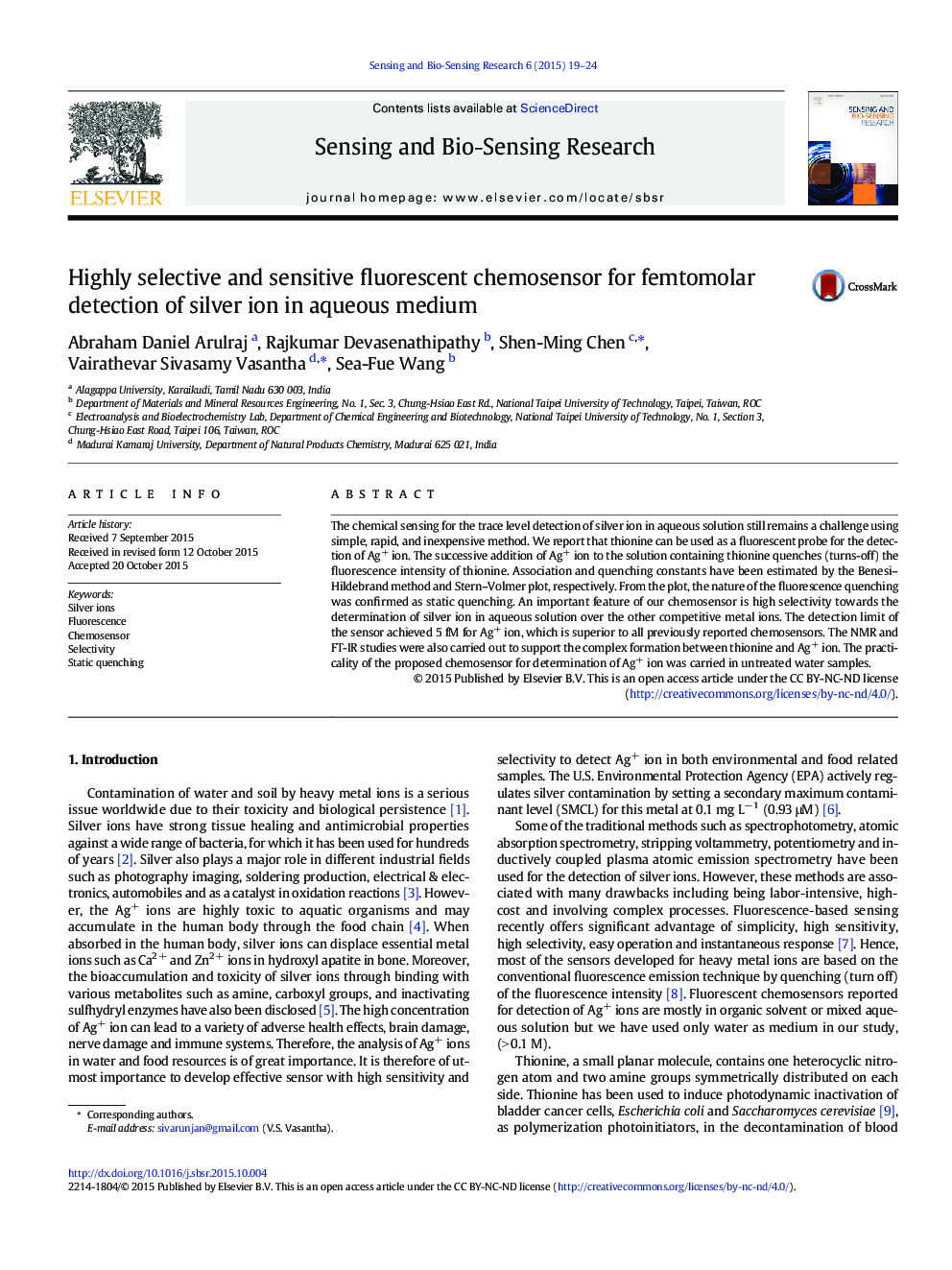| Article ID | Journal | Published Year | Pages | File Type |
|---|---|---|---|---|
| 804030 | Sensing and Bio-Sensing Research | 2015 | 6 Pages |
•The high solubility of thionine in water is an advantage in silver ion recognition.•The detection limit of the sensor for Ag+ ion is 5 fM•Sensitivity & Selectivity of the sensor is superior to all previous reports
The chemical sensing for the trace level detection of silver ion in aqueous solution still remains a challenge using simple, rapid, and inexpensive method. We report that thionine can be used as a fluorescent probe for the detection of Ag+ ion. The successive addition of Ag+ ion to the solution containing thionine quenches (turns-off) the fluorescence intensity of thionine. Association and quenching constants have been estimated by the Benesi–Hildebrand method and Stern–Volmer plot, respectively. From the plot, the nature of the fluorescence quenching was confirmed as static quenching. An important feature of our chemosensor is high selectivity towards the determination of silver ion in aqueous solution over the other competitive metal ions. The detection limit of the sensor achieved 5 fM for Ag+ ion, which is superior to all previously reported chemosensors. The NMR and FT-IR studies were also carried out to support the complex formation between thionine and Ag+ ion. The practicality of the proposed chemosensor for determination of Ag+ ion was carried in untreated water samples.
